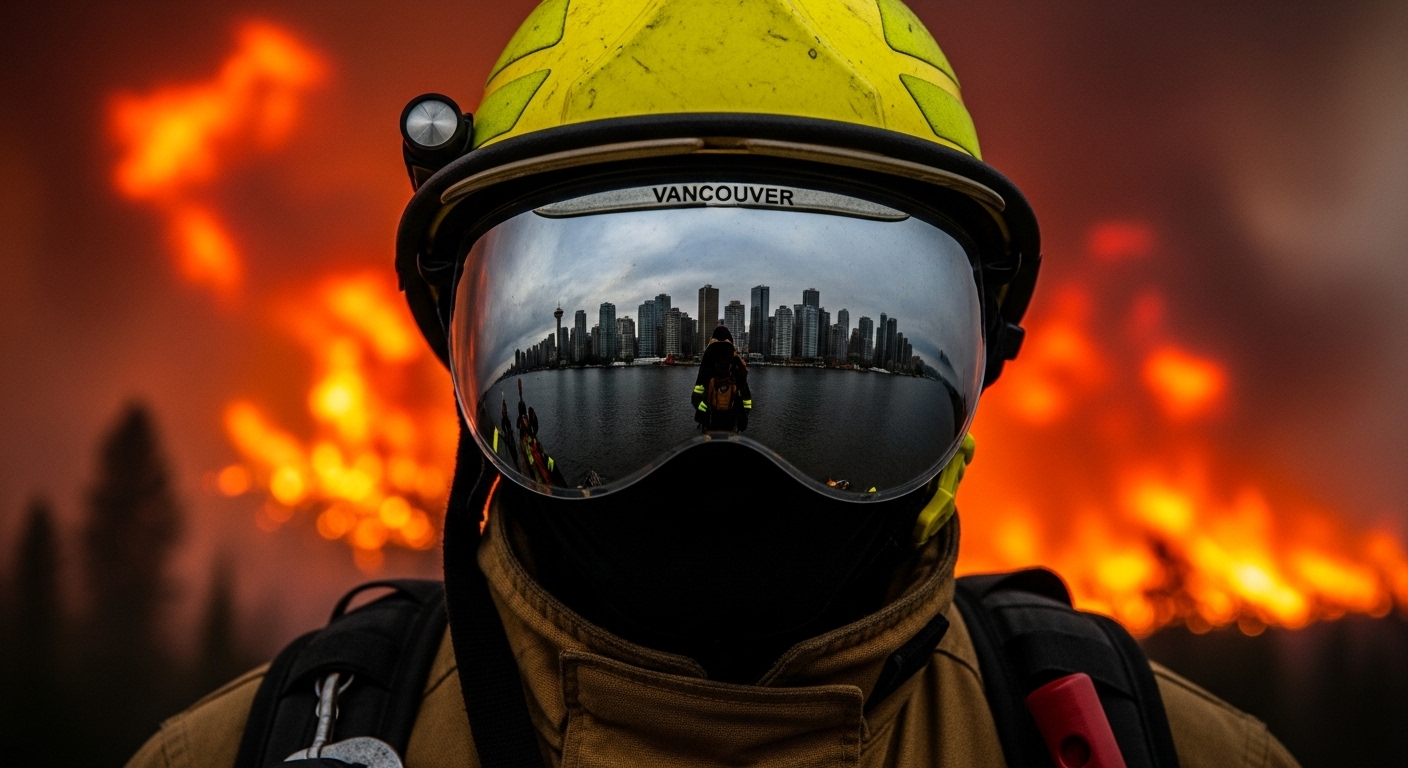The summer of 2023 will be remembered as the season Canada’s skies turned orange. From the boreal forests of Quebec to the mountain parks of British Columbia, an unprecedented wave of wildfires raged, forcing hundreds of thousands from their homes and casting a pall of smoke that drifted across the continent. This was not merely a bad fire season; it was a historic environmental event that brought the stark reality of a new, more volatile climate era into the daily lives of millions.
This new reality is the predictable result of two powerful, interconnected forces: the relentless acceleration of climate change, and the ecological debt from over a century of misguided forest management. This is the full story of why this is happening.
Part 1: The New Reality – A Nation on Fire
The narrative of Canada’s wildfire crisis is now written in staggering statistics. The 2023 wildfire season stands as a stark demarcation point. According to the Canadian National Fire Database, over 18.5 million hectares of land burned—an area larger than half the world’s countries. This is more than seven times the long-term national average. Crucially, the issue is not more fires, but more intense “megafires.” A very small percentage of fires are now responsible for over 97% of the total area burned each year, a statistical signature of our new reality.
Part 2: The Twin Causes of the Crisis
A) The Climate Accelerator
Canada is warming at approximately double the global average, which systematically creates conditions conducive to large, intense wildfires. As detailed by the Climate Atlas of Canada, this leads to longer, hotter, and drier fire seasons. This dries out forest fuels, making them more susceptible to ignition. A study by the World Weather Attribution initiative concluded that human-induced climate change more than doubled the likelihood of the extreme fire weather conditions observed in recent record-breaking seasons.
B) A Legacy of Fuel
For over a century, the standard practice in Canadian forestry was total wildfire suppression. This policy, aimed at protecting timber and settlements, had a dangerous unintended consequence: it allowed forests to become unnaturally dense and loaded with fuel. By removing frequent, low-intensity fires from the ecosystem, these policies created a landscape-scale tinderbox, priming forests for the high-intensity crown fires that define today’s crisis.
Part 3: The Cascading Consequences
The impacts of these mega-fires cascade through public health, the national economy, and ecological stability.
- Public Health Crisis: Wildfire smoke has emerged as a major public health crisis. The smoke’s fine particulate matter (PM2.5) can penetrate deep into the lungs, exacerbating respiratory conditions, stressing the cardiovascular system, and impacting mental health. As Health Canada advises, these effects are most severe for children, the elderly, and those with pre-existing conditions.
- Community Displacement: Wildfires are a leading cause of displacement in Canada, disproportionately affecting Indigenous communities. In 2023, Canada accounted for an astonishing 43% of all people displaced by wildfires globally.
- Economic Disruption: The financial costs are immense, including over $1 billion annually in suppression costs. As analyzed by institutions like Oxford Economics, the indirect costs from disruptions to forestry, tourism, and energy sectors are even greater.
- Environmental Damage: Intense wildfires can contaminate watersheds, harm biodiversity, and release enormous amounts of carbon into the atmosphere, creating a dangerous feedback loop that accelerates climate change.
Part 4: The Path Forward: Learning to Live with Fire
Confronting the crisis requires a fundamental paradigm shift from reactive suppression to proactive resilience.
A) Indigenous Fire Stewardship
At the forefront of this shift is the revitalization of Indigenous fire stewardship. For millennia, Indigenous Peoples used “cultural burning”—the deliberate application of low-intensity “good fire”—to manage landscapes, reduce fuel loads, and enhance biodiversity. As explained by the Indigenous Climate Hub, restoring these practices is now seen as a critical component of building wildfire resilience.
B) Modernizing Our Approach
Fire agencies are increasingly adopting a more holistic approach that includes:
- Prescribed Burns: Carefully planned and controlled fires designed to mimic natural cycles and reduce hazardous fuels in a safe way, a practice used by agencies like Parks Canada.
- FireSmarting Communities: Proactive efforts, detailed in Canada’s Wildland Fire Strategy, to make homes and communities more resistant to fire through landscaping, building materials, and emergency planning.
Conclusion: A Choice Between Reaction and Resilience
Canada’s wildfire crisis is not a fleeting emergency but a new and enduring reality. The path forward cannot be a continuation of the past. The choice is not whether to spend money on wildfires, but how and when. It is a choice between continuing to pay the escalating costs of disaster or making the strategic, long-term investments in adaptation and mitigation—blending Indigenous knowledge with modern science—to protect Canadian lives, property, and natural heritage for generations to come.

